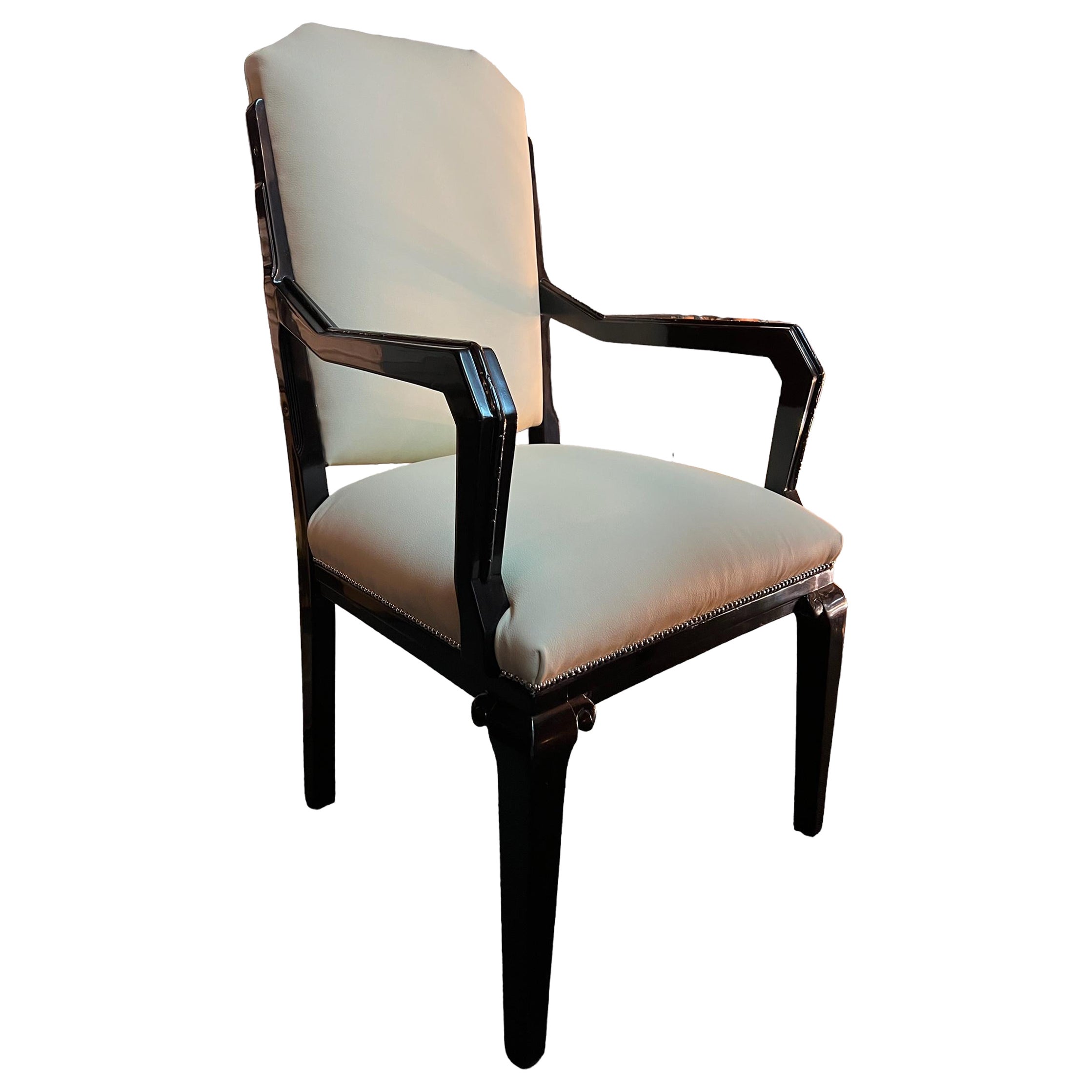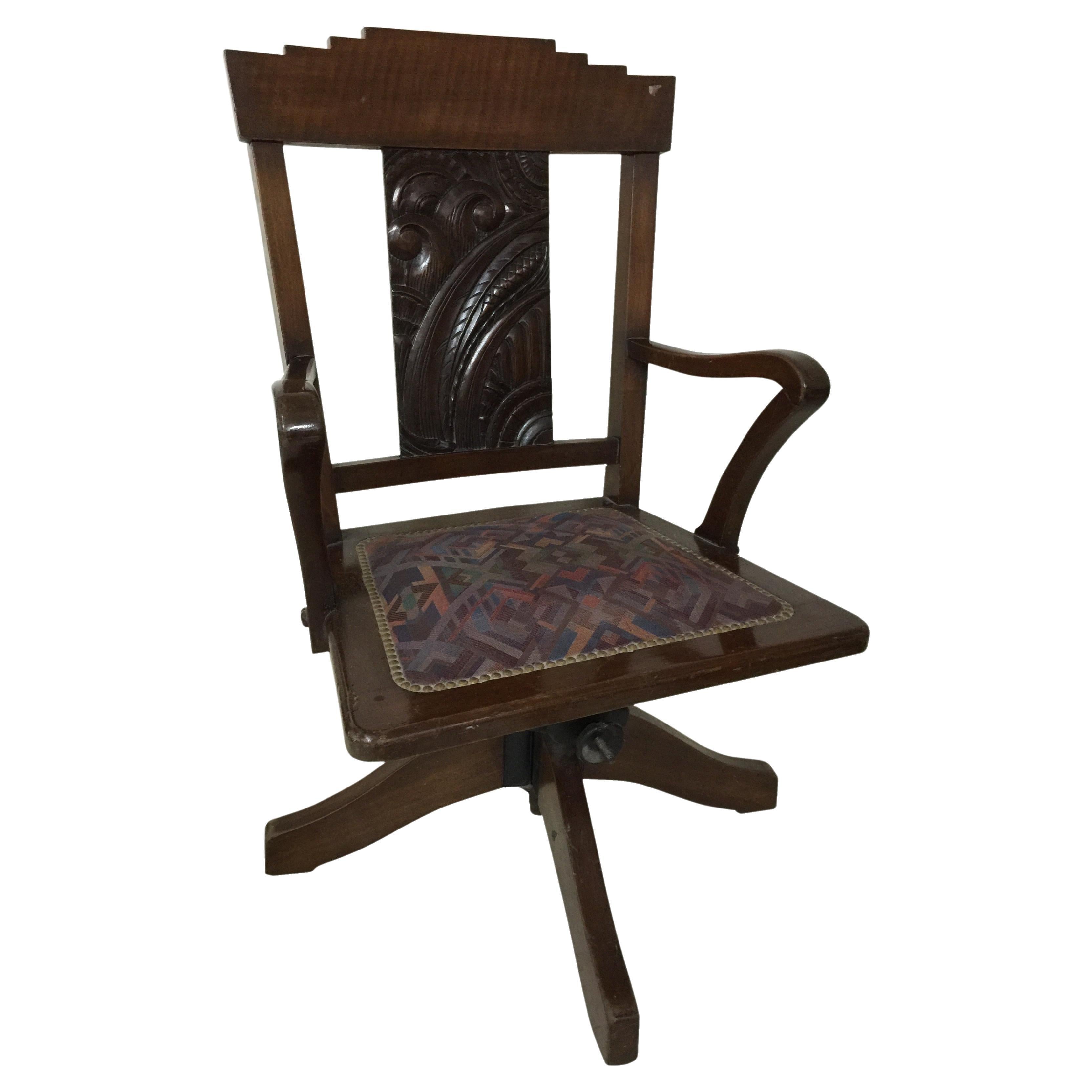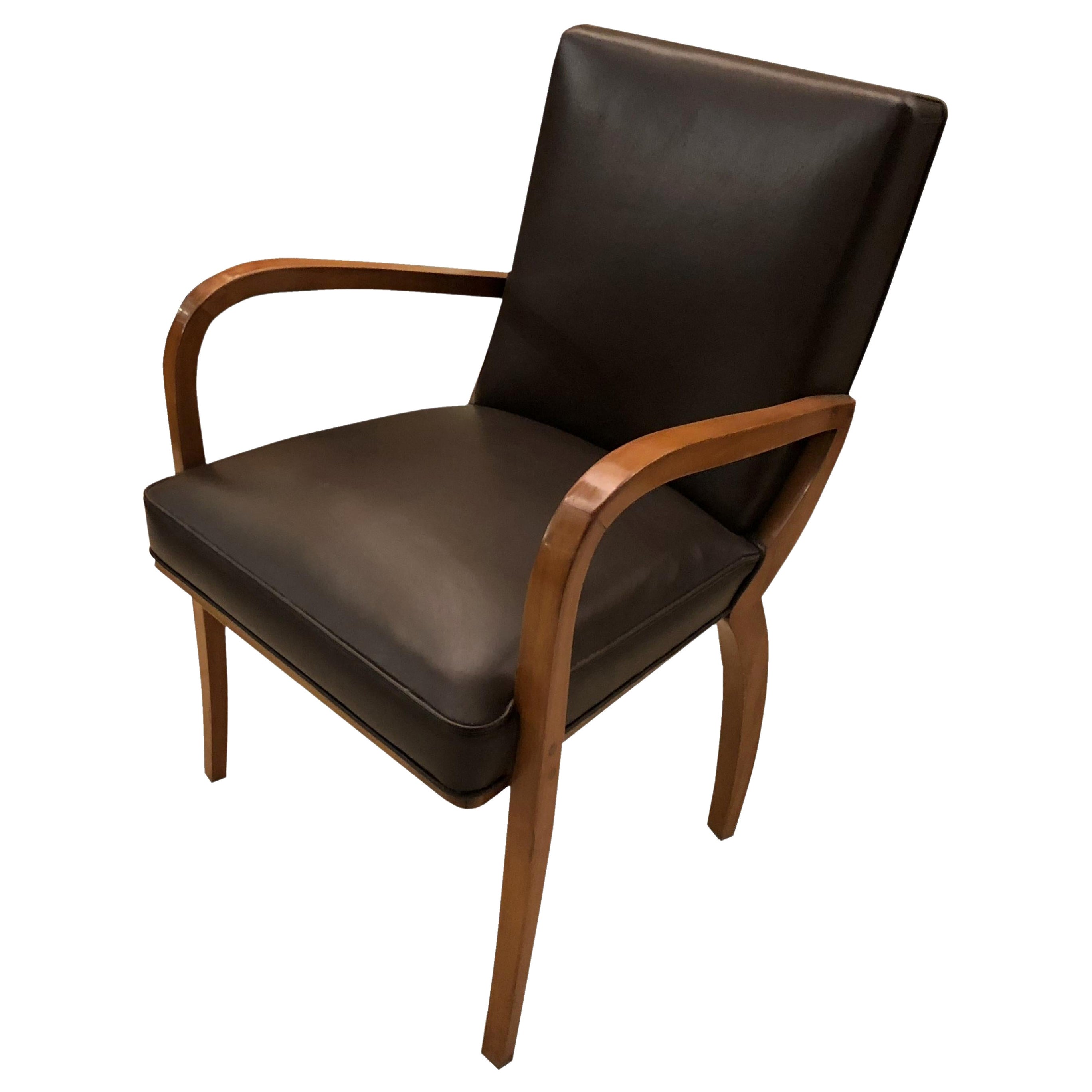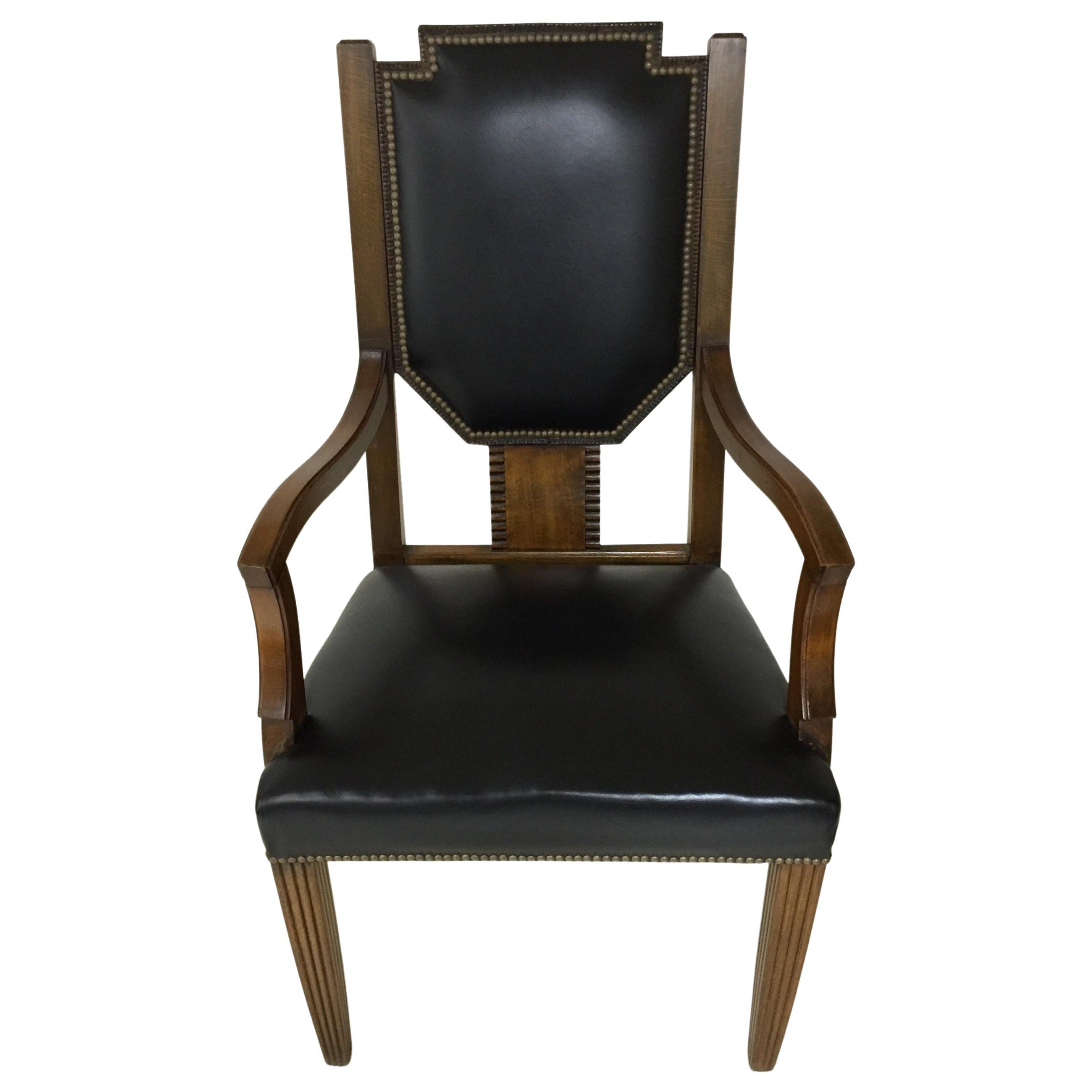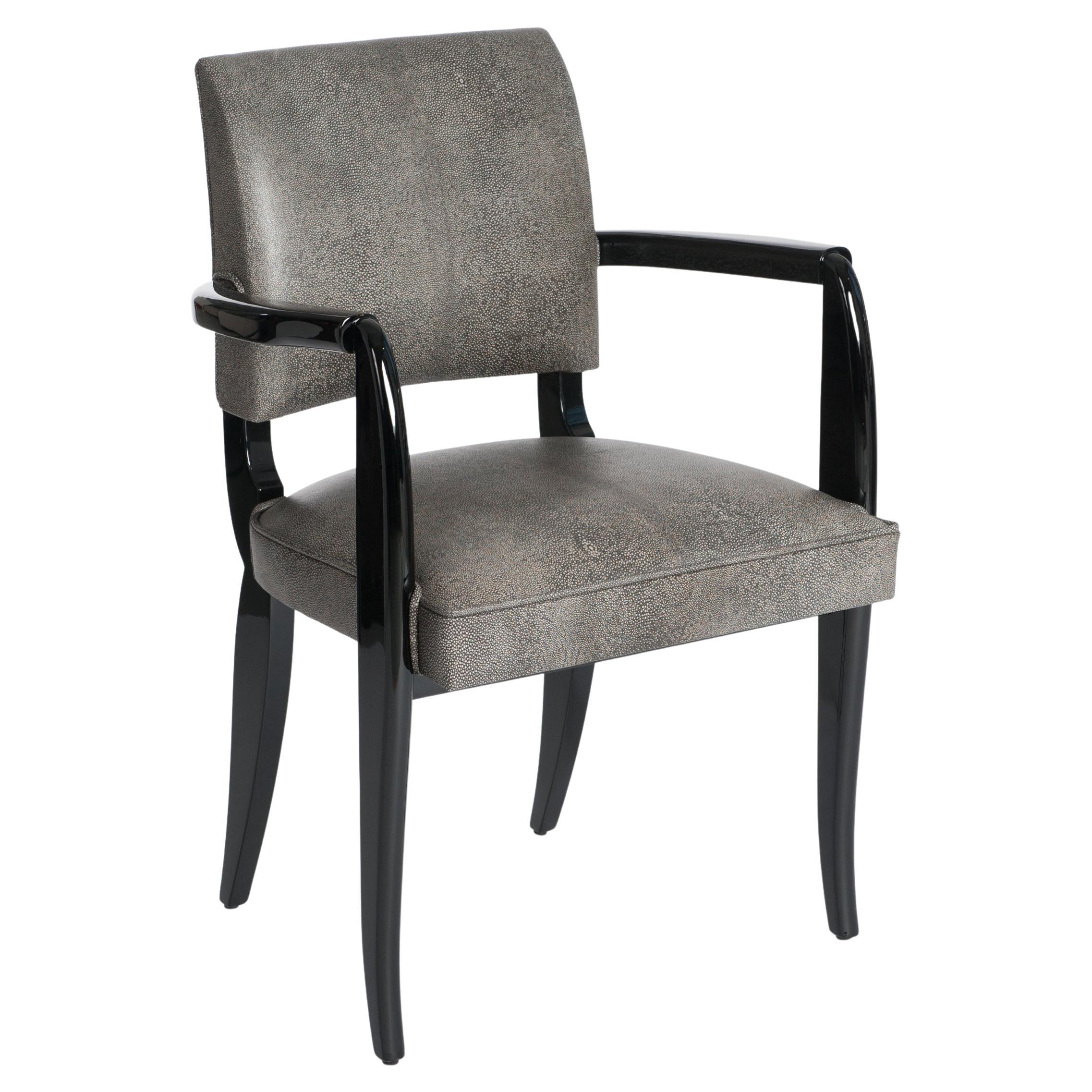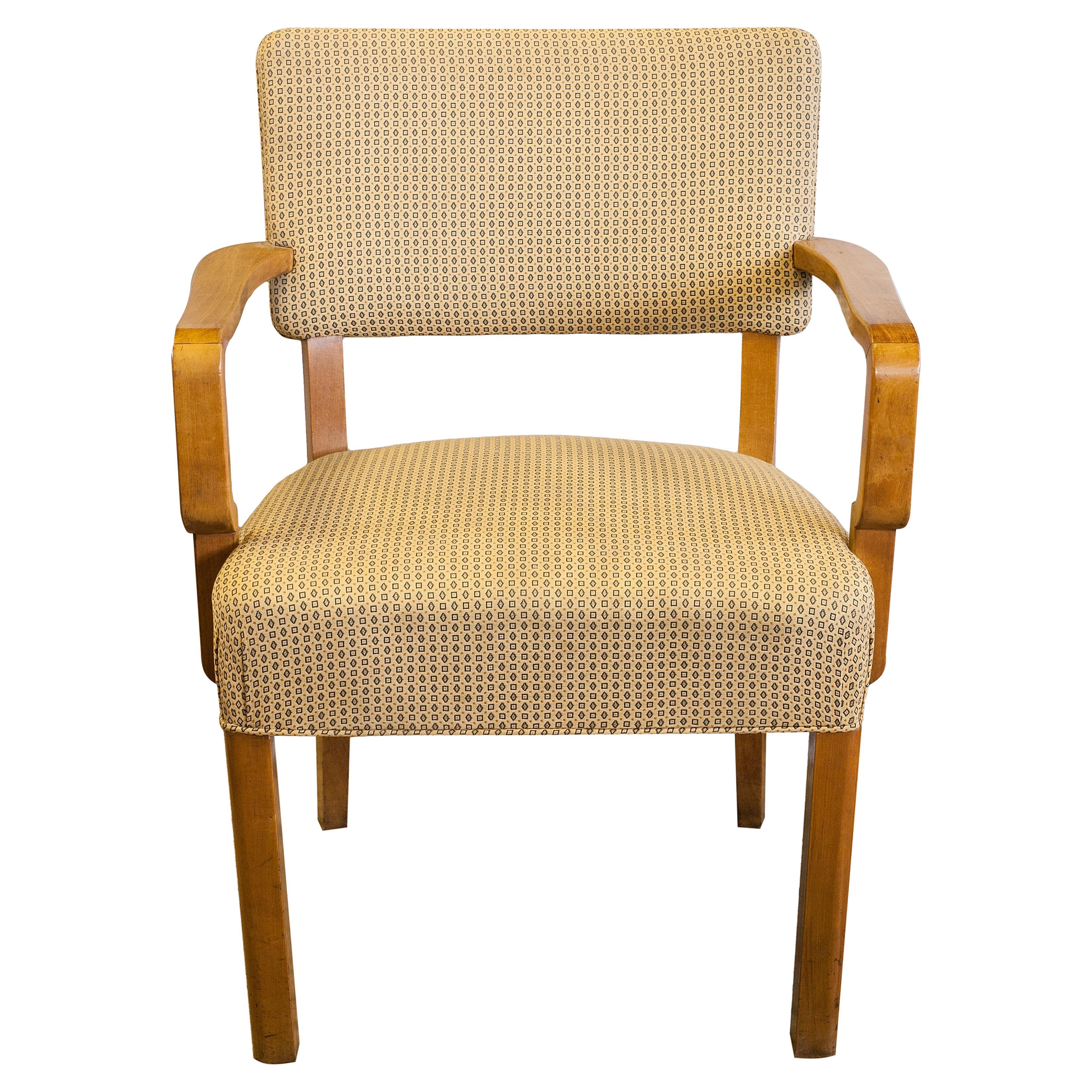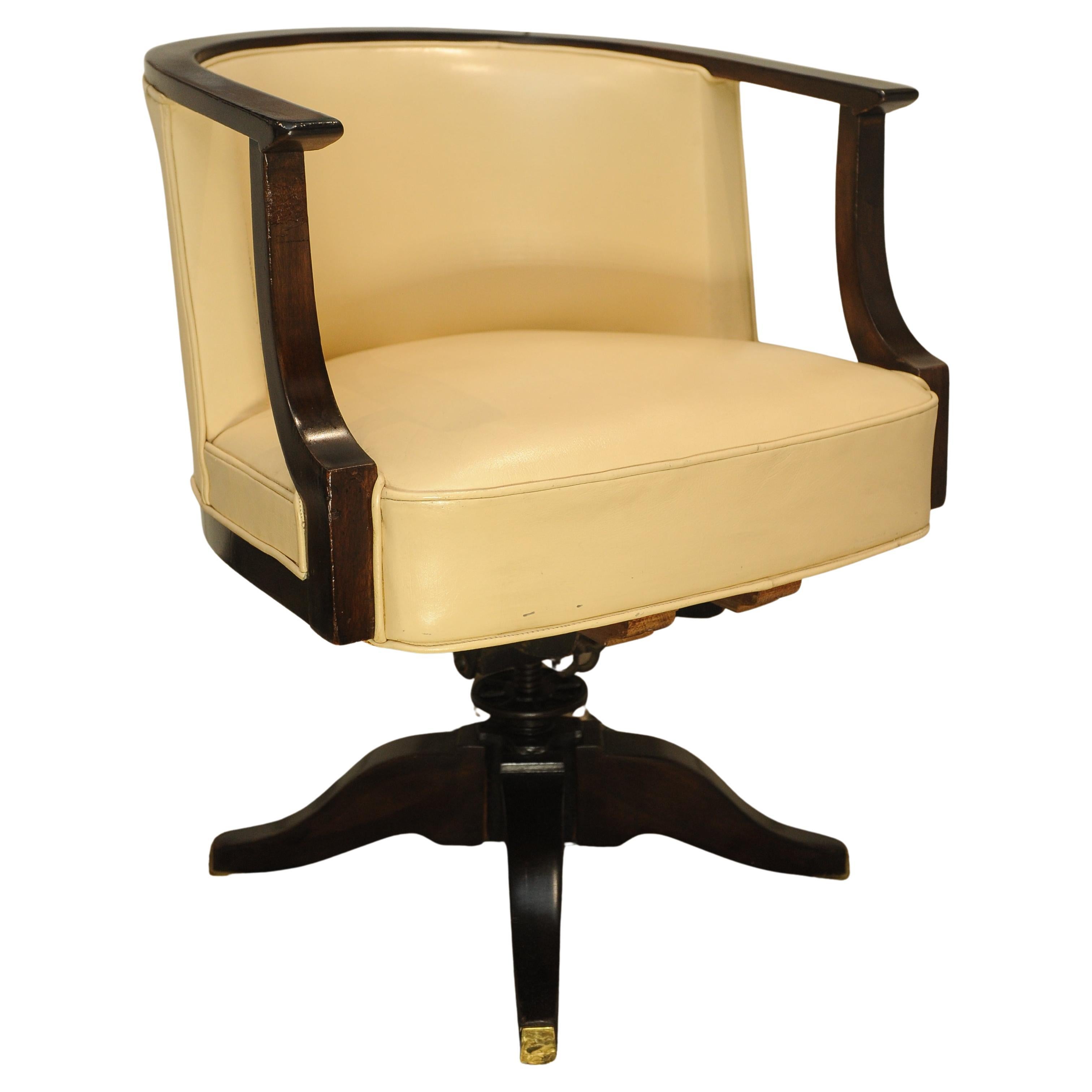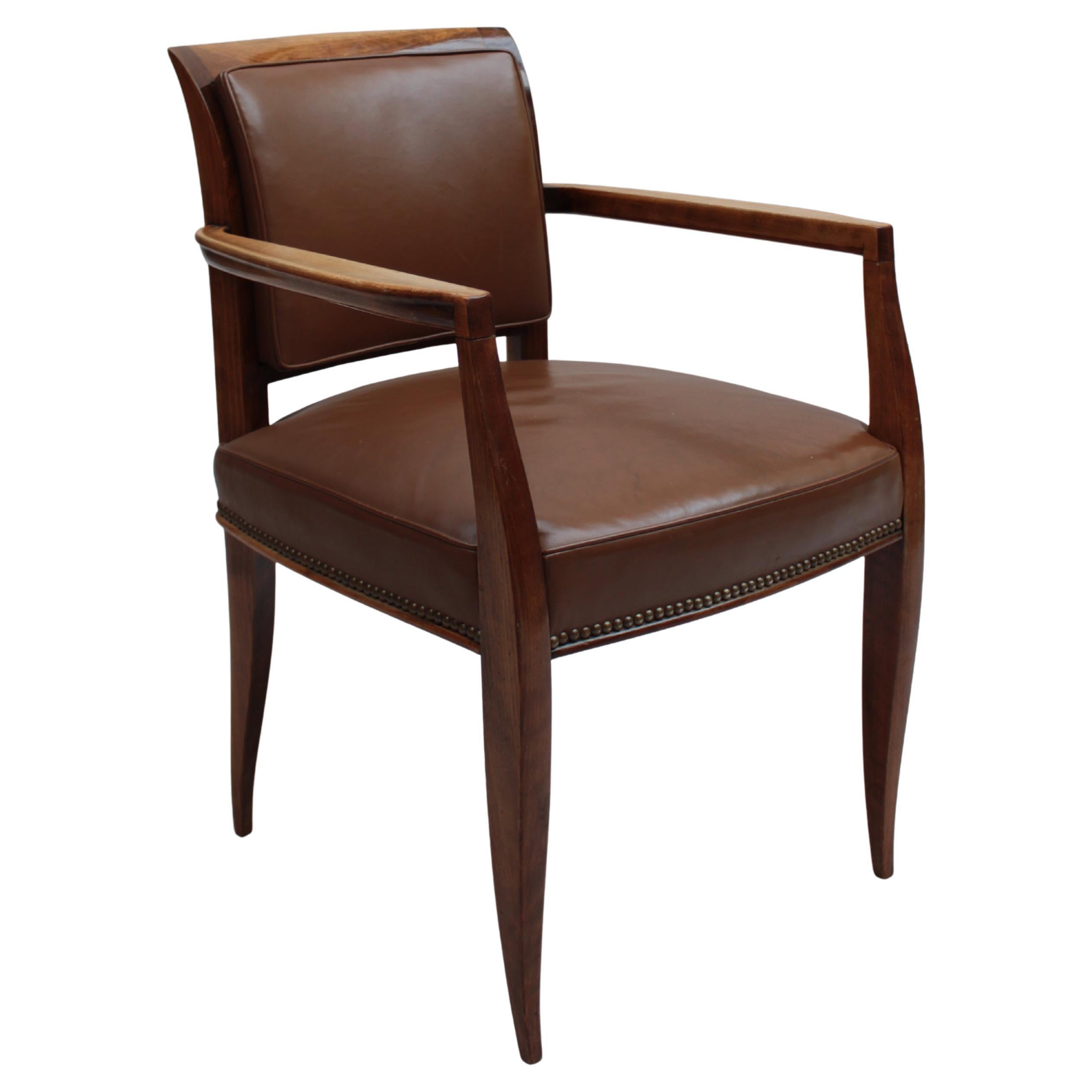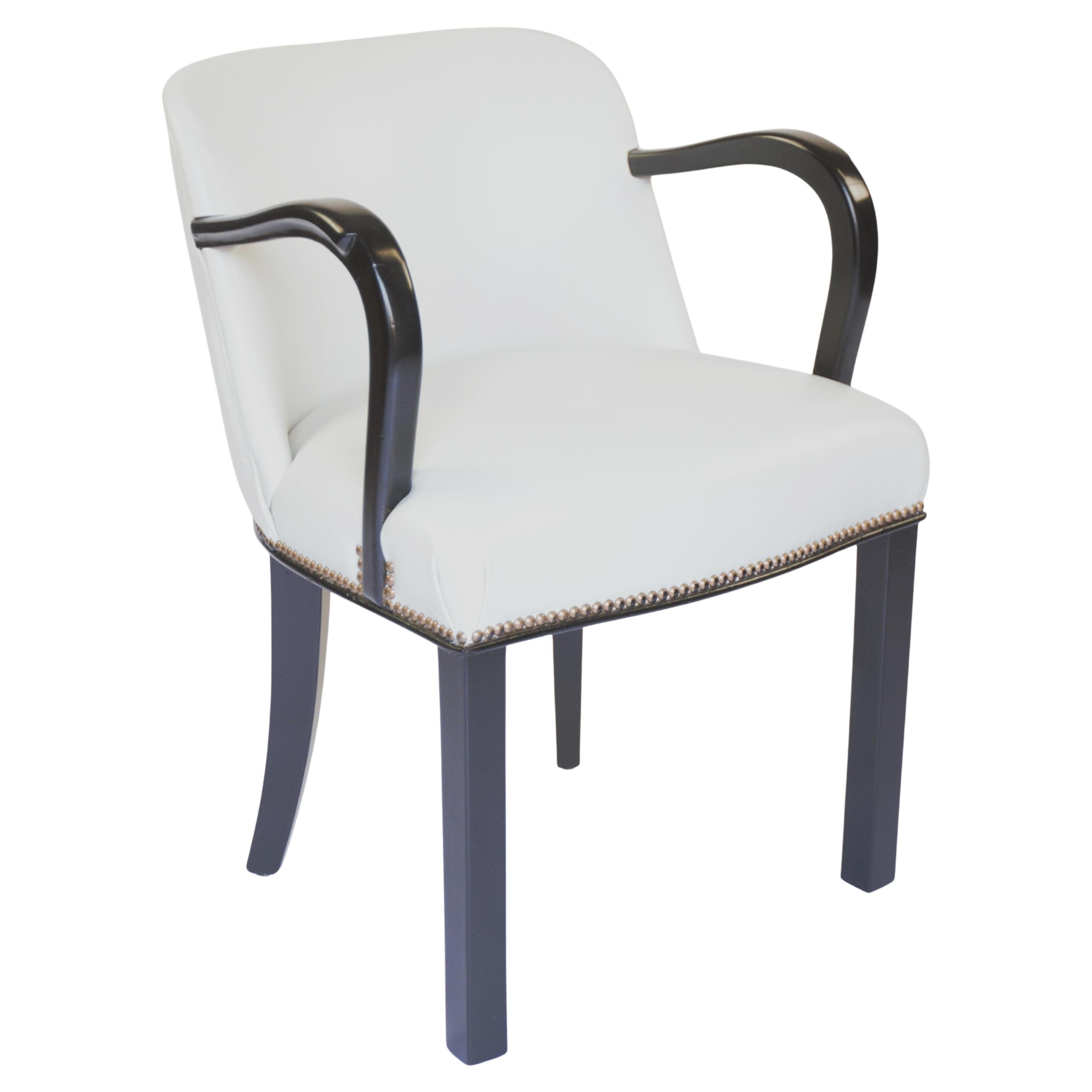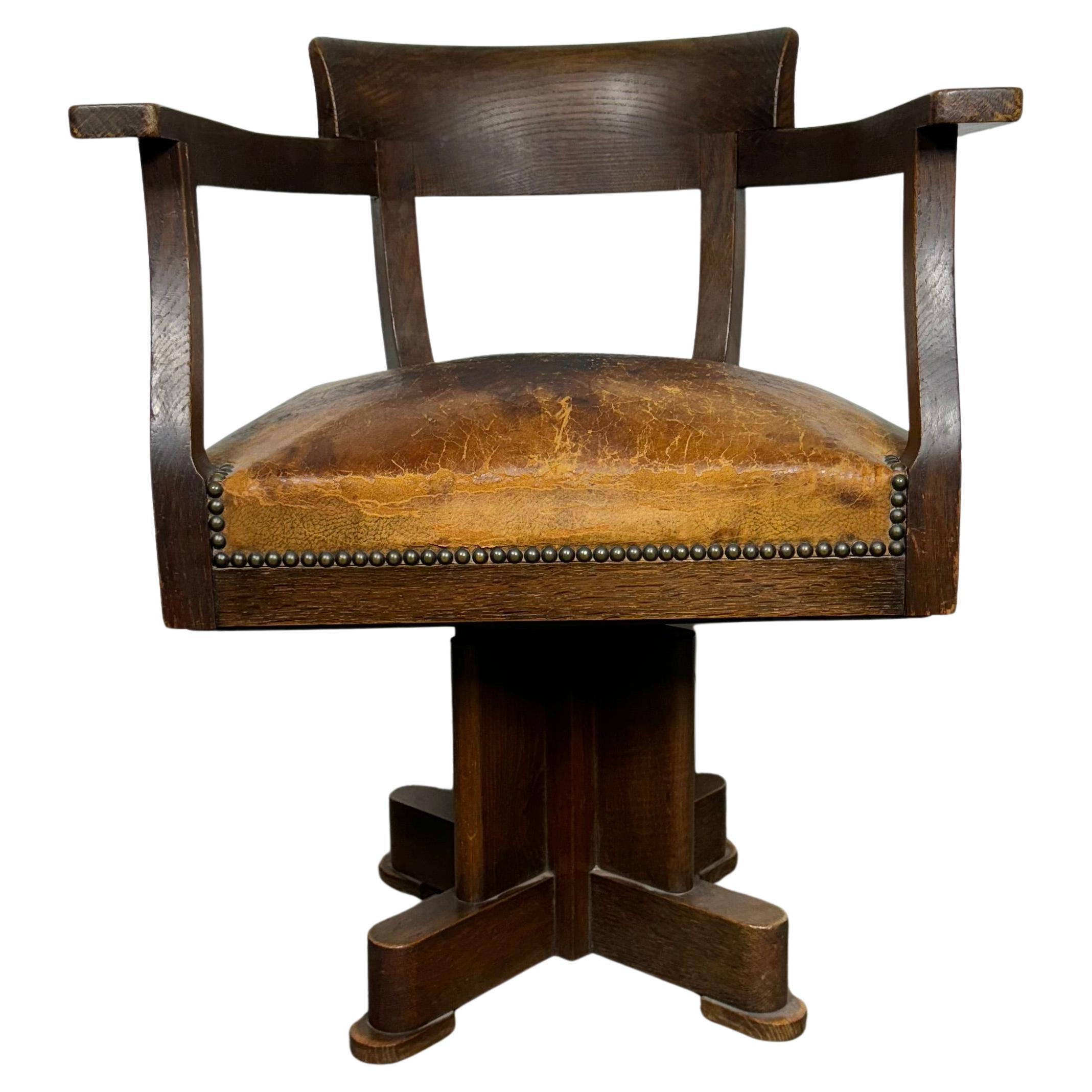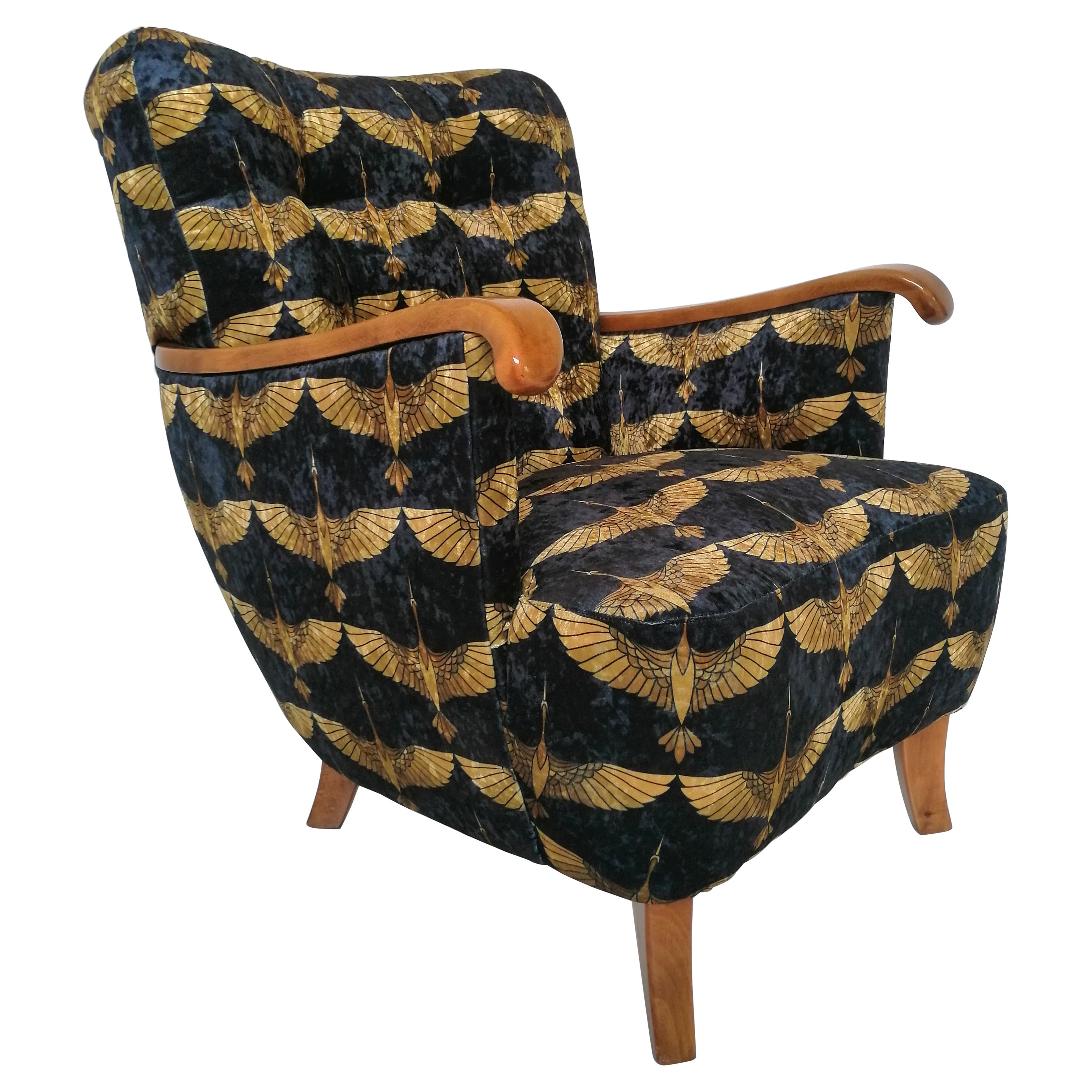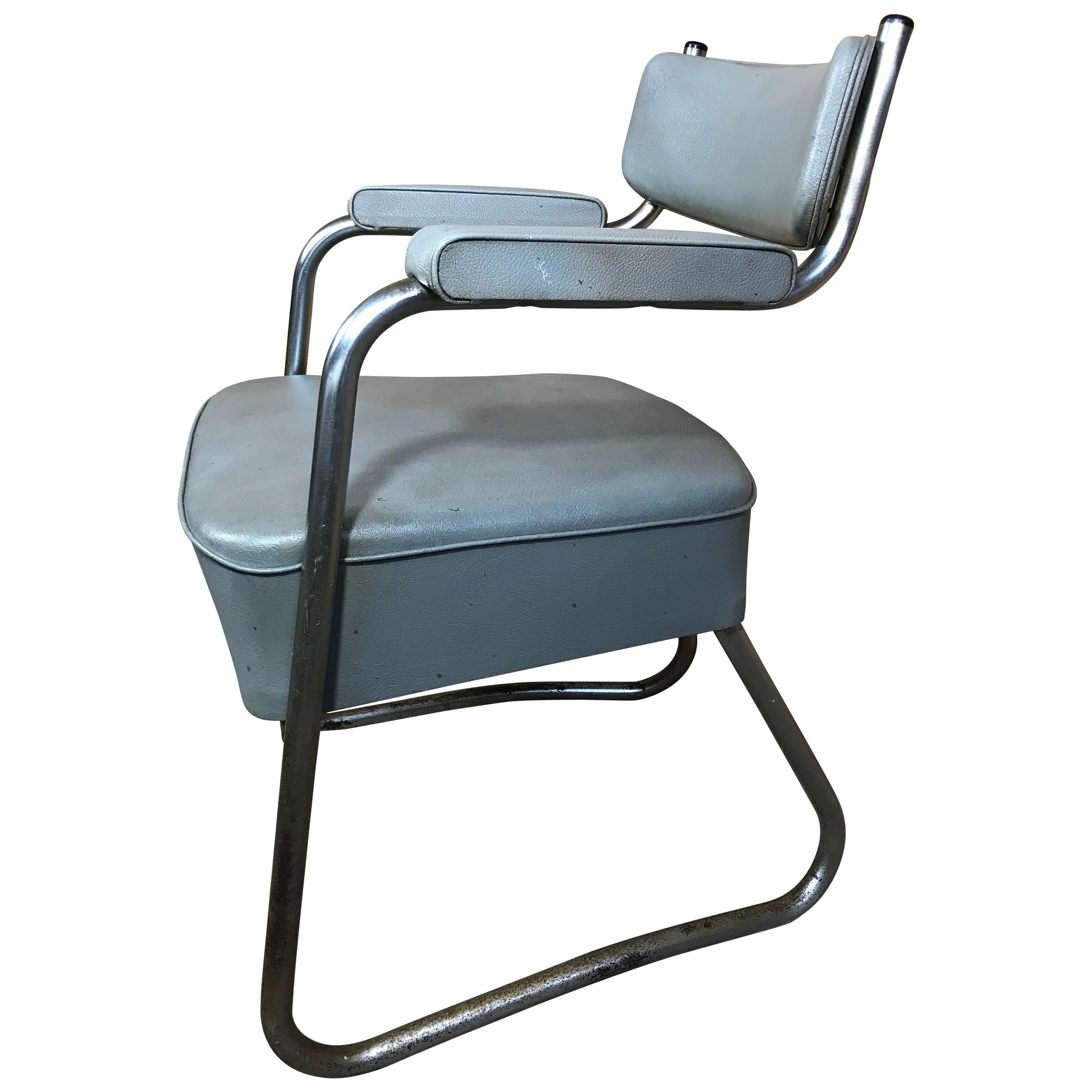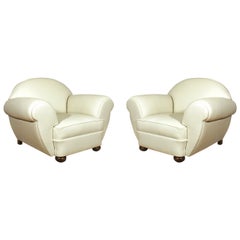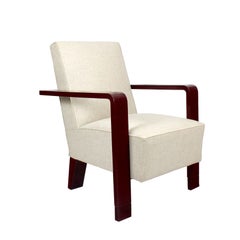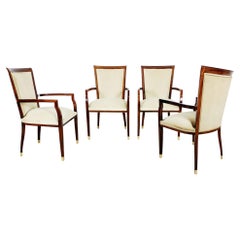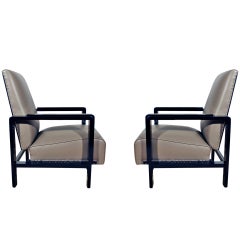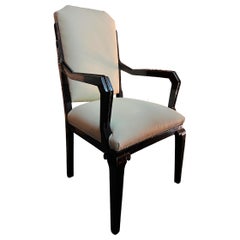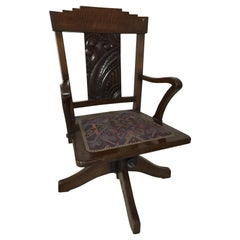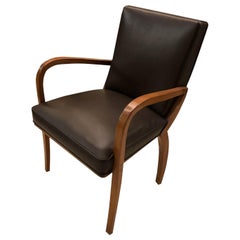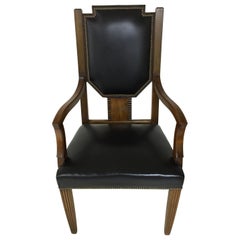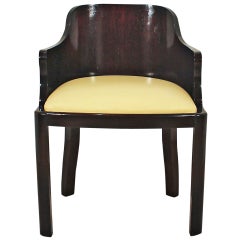
1930´s Art Deco Desk Chair in Solid Oak, leather - Belgium
View Similar Items
Want more images or videos?
Request additional images or videos from the seller
1 of 9
1930´s Art Deco Desk Chair in Solid Oak, leather - Belgium
$3,117.87List Price
About the Item
- Dimensions:Height: 30.32 in (77 cm)Width: 22.84 in (58 cm)Depth: 19.69 in (50 cm)Seat Height: 19.3 in (49 cm)
- Style:Art Deco (Of the Period)
- Materials and Techniques:
- Place of Origin:
- Period:
- Date of Manufacture:1930s
- Condition:Reupholstered. Refinished. Wear consistent with age and use. Completely restored.
- Seller Location:Girona, ES
- Reference Number:Seller: FBAD1stDibs: LU103761331796
About the Seller
4.9
Vetted Professional Seller
Every seller passes strict standards for authenticity and reliability
Established in 1998
1stDibs seller since 2014
225 sales on 1stDibs
Typical response time: 3 hours
Authenticity Guarantee
In the unlikely event there’s an issue with an item’s authenticity, contact us within 1 year for a full refund. DetailsMoney-Back Guarantee
If your item is not as described, is damaged in transit, or does not arrive, contact us within 7 days for a full refund. Details24-Hour Cancellation
You have a 24-hour grace period in which to reconsider your purchase, with no questions asked.Vetted Professional Sellers
Our world-class sellers must adhere to strict standards for service and quality, maintaining the integrity of our listings.Price-Match Guarantee
If you find that a seller listed the same item for a lower price elsewhere, we’ll match it.Trusted Global Delivery
Our best-in-class carrier network provides specialized shipping options worldwide, including custom delivery.More From This Seller
View AllPair of Large Art Deco Club Armchairs in Ivory Leather - Belgium
Located in Girona, Girona
An exceptional pair of Art Deco club armchairs, completely restored and new ivory white leather upholstery,
Belgium, circa 1930.
Category
Vintage 1930s Belgian Art Deco Armchairs
Materials
Leather
1930s Art Deco Armchair, Lacquered Beech, Off-White Wool - Belgium
Located in Girona, Girona
Spectacular Art Deco cubist armchair, "Chinese red" lacquered beechwood, new off-white wool upholstery.
Belgium, circa 1930.
Category
Vintage 1930s Belgian Art Deco Armchairs
Materials
Wool, Beech
Set of 4 Art Deco desk or table armchairs – France 1930
Located in Girona, Girona
Set of 4 Art Deco table or desk armchairs, solid rosewood with polished brass feet, fillings and upholstery entirely redone in “pearl” velvet. French polish.
France circa 1930.
Category
Vintage 1930s French Art Deco Armchairs
Materials
Brass
1930-1935 Pair of Art Deco Armchairs, Stained Wood and Leather - Spain
Located in Girona, Girona
Pair of Art Deco cubist systems armchairs, French polished and dark varnished wood and mole leather.
Spain, 1930-1935
Measures: Extended depth 100 cm.
Category
Vintage 1930s Spanish Art Deco Armchairs
Materials
Leather, Wood
Pair of Art Deco armchairs – France 1930
Located in Girona, Girona
Spectacular pair of Art Deco armchairs with wooden frame, stained and french polished “sledge” base extending over the front, fillings and upholstery redone in pearl grey velvet.
Fr...
Category
Vintage 1930s French Art Deco Armchairs
Materials
Velvet, Wood
$7,554 / set
Art Deco Cubist office armchair - France 1930
Located in Girona, Girona
Cubist office armchair with wooden structure, legs and armrests in solid varnished walnut, reupholstered with geometric pattern Art Deco velvet.
France c. 1930.
Category
Vintage 1930s French Art Deco Armchairs
Materials
Velvet, Wood, Walnut
You May Also Like
Desk Chair in Leather and Wood, Style: Art Deco, France, 1930
Located in Ciudad Autónoma Buenos Aires, C
Art Deco Armchair
Wood and leather
Year: 1930
Country: France
If you are looking for a desk chair to match your desk, we have what you need.
We have specialized in the sale of Art ...
Category
Vintage 1930s French Art Deco Office Chairs and Desk Chairs
Materials
Wood, Leather
Desk Chair Style: Art Deco, France, 1930
Located in Ciudad Autónoma Buenos Aires, C
Art Deco desk chair
Wood
Year: 1930
Country: France
If you are looking for a desk chair to match your desk, we have what you need.
We have specialized in the sale of Art Deco and Art Nouveau and Vintage styles since 1982.
Pushing the button that reads 'View All From Seller'. And you can see more objects to the style for sale.
Why are there so many antiques in Argentina?
In the 1880 – 1940 there was a grate wave of immigration encouraged by the periods of war that were taking place.
1st World War took place between 1914 and 1918
2nd World War took place between 1939 and 1945
The immigrants options were New York or Buenos Aires. Tickets were cheap and in Buenos Aires they were welcomed with open arms, as it was a country where everything was still to be done.
Argentina was the country of new opportunities, labour was needed and religious freedom was assured, in many cases the of the family travel first until they were settled and then the rest of the family members join them.
In the immigrant museum “Ellis Island Immigrant Building” in New York you can se the promotional posters of the boats that would take them to a new life.
Between the years 1895 and 1896, Argentina had the highest DGP (gross domestic product) per capita in the world according to the Maddison Historical Statistics index, this situation arose due to the large amount of food being exported to European countries, which were at war.
The Argentinean ships left the port of Buenos Aires with food, but they returned with furniture, clothes and construction elements, (it´s common to see this the old buildings of the historic neighbourhood of San Telmo, the beams with the inscription “Made in England)”, as well as many markets that were built in Buenos Aires, such us the San Telmo Market, whose structure was brought by ship and afterwards assembled in 900 Defensa Street.
With the great influence of European immigrants living in the country, the children of the upper classes travelled to study in France, resulting in the inauguration of “La Maison Argentinienne”, on 27th of June 1928, in the international city of Paris, which hosted many Argentinians that were studying in Frace.
It´s the fourth house to be built after France, Canada and Belgium, being the first Spanish-speaking one. Still in place today (17 Bd Jourdan, 75014, Paris, France). Many of the children of these wealthy families who attended international art exhibitions, museums and art courses abroad, took a keen interest in the European style. This is why Buenos Aires was at the time referred as “The Paris of South America”.
Between the years 1890 and 1920 more than a hundred Palaces were built on Alvear Avenue the most exclusive avenue in Buenos Aires. Today some of these palaces have been transformed into museums, hotels and embassies.
In the year 1936, the Kavanagh building was inaugurated, it was the tallest reinforced concrete building in South America.
During 1994 the American Society of Civil Engineers distinguished it as an “international engineering milestone”, and it´s now considered a World Heritage of Modern Architecture.
At the time was common to hire foreign architects such as Le Corbusier, who visited Buenos Aires/Argentina in 1929 and in 1948 he drew up the blueprints for a house built in La Plata City (which was declared a World Heritage Site).
In 1947, the Hungarian architect Marcelo Breuer designed “Parador Ariston” in the seaside city of Mar del Plata. After an Argentinean student at Harvard University convinced him to come to Argentina. He worked on an urban development project in the Casa Amarilla, area of La Boca.
The Ukrainian architect, Vladimiro Acosta, arrives in Argentina in 1928 and worked as an architect until que moved to Brazil.
Antonio Bonet, a Spanish architect who worked with Le Corbusier in Paris, arrives in Argentina in 1937, where he carried out several architectural works and in 1938 designs the well-known BFK chair...
Category
Vintage 1930s French Art Deco Office Chairs and Desk Chairs
Materials
Wood
Desk Chair Style: Art Deco, France, Material Wood and Leather, 1930
Located in Ciudad Autónoma Buenos Aires, C
Art Deco desk chair
Material: leather and wood
Year: 1930
Country: France
If you are looking for a desk chair to match your desk, we have what you nee...
Category
Vintage 1930s French Art Deco Office Chairs and Desk Chairs
Materials
Leather, Wood
Desk Chair for the King, Style: Art Deco, 1930, German
Located in Ciudad Autónoma Buenos Aires, C
Art Deco desk chair
Material: leather and wood
Year: 1930
Country: Germany
If you are looking for a desk chair to match your desk, we have what you ne...
Category
Vintage 1930s German Art Deco Armchairs
Materials
Leather, Wood
French Art Déco Office Chair Black Highgloss Lacquer Raydesign leather 1930s
Located in Salzburg, AT
French Art Déco Office Chair Black Highgloss Lacquer Raydesign leather 1930s
Elegant shaped French Art Deco office chair (armchair) completely restored.
Re-lacquerd with black shiny...
Category
Vintage 1930s French Art Deco Office Chairs and Desk Chairs
Materials
Leather, Beech
$1,630 Sale Price
20% Off
Desk Chair Style: Art Deco, France, 1920
Located in Ciudad Autónoma Buenos Aires, C
Art Deco desk chair
Country: France
If you are looking for a desk chair to match your desk, we have what you need.
We have specialized in the sale of Art Deco and Art Nouveau and Vintage styles since 1982. If you have any questions we are at your disposal.
Pushing the button that reads 'View All From Seller'. And you can see more objects to the style for sale.
Why are there so many antiques in Argentina?
In the 1880 – 1940 there was a grate wave of immigration encouraged by the periods of war that were taking place.
1st World War took place between 1914 and 1918
2nd World War took place between 1939 and 1945
The immigrants options were New York or Buenos Aires. Tickets were cheap and in Buenos Aires they were welcomed with open arms, as it was a country where everything was still to be done.
Argentina was the country of new opportunities, labour was needed and religious freedom was assured, in many cases the of the family travel first until they were settled and then the rest of the family members join them.
In the immigrant museum “Ellis Island Immigrant Building” in New York you can se the promotional posters of the boats that would take them to a new life.
Between the years 1895 and 1896, Argentina had the highest DGP (gross domestic product) per capita in the world according to the Maddison Historical Statistics index, this situation arose due to the large amount of food being exported to European countries, which were at war.
The Argentinean ships left the port of Buenos Aires with food, but they returned with furniture, clothes and construction elements, (it´s common to see this the old buildings of the historic neighbourhood of San Telmo, the beams with the inscription “Made in England)”, as well as many markets that were built in Buenos Aires, such us the San Telmo Market, whose structure was brought by ship and afterwards assembled in 900 Defensa Street.
With the great influence of European immigrants living in the country, the children of the upper classes travelled to study in France, resulting in the inauguration of “La Maison Argentinienne”, on 27th of June 1928, in the international city of Paris, which hosted many Argentinians that were studying in Frace.
It´s the fourth house to be built after France, Canada and Belgium, being the first Spanish-speaking one. Still in place today (17 Bd Jourdan, 75014, Paris, France). Many of the children of these wealthy families who attended international art exhibitions, museums and art courses abroad, took a keen interest in the European style. This is why Buenos Aires was at the time referred as “The Paris of South America”.
Between the years 1890 and 1920 more than a hundred Palaces were built on Alvear Avenue the most exclusive avenue in Buenos Aires. Today some of these palaces have been transformed into museums, hotels and embassies.
In the year 1936, the Kavanagh building was inaugurated, it was the tallest reinforced concrete building in South America.
During 1994 the American Society of Civil Engineers distinguished it as an “international engineering milestone”, and it´s now considered a World Heritage of Modern Architecture.
At the time was common to hire foreign architects such as Le Corbusier, who visited Buenos Aires/Argentina in 1929 and in 1948 he drew up the blueprints for a house built in La Plata City (which was declared a World Heritage Site).
In 1947, the Hungarian architect Marcelo Breuer designed “Parador Ariston” in the seaside city of Mar del Plata. After an Argentinean student at Harvard University convinced him to come to Argentina. He worked on an urban development project in the Casa Amarilla, area of La Boca.
The Ukrainian architect, Vladimiro Acosta, arrives in Argentina in 1928 and worked as an architect until que moved to Brazil.
Antonio Bonet, a Spanish architect who worked with Le Corbusier in Paris, arrives in Argentina in 1937, where he carried out several architectural works and in 1938 designs the well-known BFK...
Category
Vintage 1920s French Art Deco Office Chairs and Desk Chairs
Materials
Wood
Recently Viewed
View AllMore Ways To Browse
1930s Animal Skin Office Chairs and Desk Chairs
Italian Leather Desk Chair
Aluminum Eames Desk
French Desk Chairs
Eames Aluminium Group
Cushioned Desk Chair
Eames Fabric
Herman Miller Group Chair
Leather Danish Desk Chair
Herman Miller Fabric
Eames Aluminum Office Chair
1940s Desk Chair
Leather Mid Century Office Chair Aluminum
Ergonomic Office Chair Used
Caned Desk
Eames Plastic Chair
Gray Eames Chair
Herman Miller Eames Desk Chair
